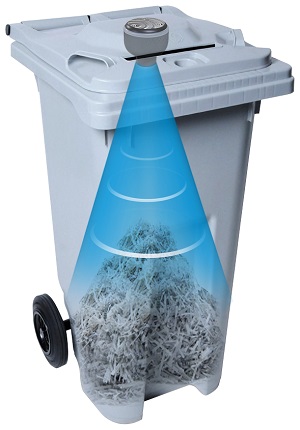 Within only a few years of its inception, the Internet of Things (IoT) has had a noticeable impact on many industries. We already know how functional IoT can be in areas such as traffic congestion management, air pollution monitoring, and earthquake detection, but one of the industries to remain without M2M connections until very recently has been waste management. The 475 billion dollar industry (2015) is expected to grow to 562 billion dollars by 2020 and simultaneously also the municipal solid waste (MSW) generation levels are expected to double by 2025. While we already produce nearly 2 billion tonnes of MSW per year, the waste generation per capita is rising as economies develop. With strained budgets and growing populations, the world is facing a crisis that keeps growing.
Within only a few years of its inception, the Internet of Things (IoT) has had a noticeable impact on many industries. We already know how functional IoT can be in areas such as traffic congestion management, air pollution monitoring, and earthquake detection, but one of the industries to remain without M2M connections until very recently has been waste management. The 475 billion dollar industry (2015) is expected to grow to 562 billion dollars by 2020 and simultaneously also the municipal solid waste (MSW) generation levels are expected to double by 2025. While we already produce nearly 2 billion tonnes of MSW per year, the waste generation per capita is rising as economies develop. With strained budgets and growing populations, the world is facing a crisis that keeps growing.
Although the waste generation keeps growing especially in developing nations, the situation is not completely hopeless. Thanks to IoT technology, many forward-looking waste management companies are now installing wirelessly connected fill-level sensors in their waste containers to detect a full trash can. As a result, the companies are saving money on operational waste collection costs while leaving a lighter ecological footprint. One of the leading solution providers of IoT waste management sensors is a South Korean company called Ecube Labs, which provides not only fill-level sensors and a smart waste collection optimization platform, but also IoT based solar-powered waste compacting bins.
How does IoT waste management work?
The concept of IoT waste management is fairly simple: an ultrasonic fill-level sensor is installed in a container to send periodical data transmissions via a 2G/3G network to a remote software platform, where the data gets processed and optimization is made. The sensor works by emitting acoustic waves and then listening for an echo. Upon reaching a level surface, the waves reflect back to the sensor with a reading – similar to a process of echolocation. Besides measuring fill-level information to detect a full trash can, the IoT based sensor also measures the waste container’s temperature and GPS coordinates. The device can be fitted with any type of waste container to measure any type of waste, including both solids and liquids.
The bins with the highest potential for operational cost reduction with IoT sensors include remotely located and far apart containers, bins with versatile filling patterns, and bins that hold high-value recyclables. In order to delay collecting the bins until they are at least 90% full, it is also better for the containers to hold non-decomposing materials. Ideal targets include also bins with difficult access, as well as large overground and underground containers, silos and tanks.
What are the benefits of IoT waste management?
Detecting a full trash can remotely by utilizing IoT waste management enables waste management companies to reduce their operational costs by up to 50%. The main driver behind the cost reductions is the reduced amount of collections, which reflects in smaller fuel, labor, and fleet management costs. Non-monetary benefits of utilizing the IoT based waste management solution include smart data-driven decision-making (the software calculates optimized collection routes and schedules), reduced CO2 emissions and pollution, cleaner public spaces and elimination of overflowing trash cans. The sensor also notifies its owner instantly in case of a fire alarm or theft.
